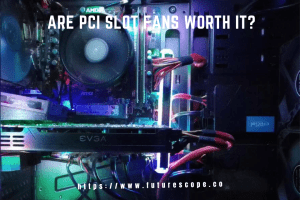What We Have Covered in This Article
Last Updated on October 10, 2022 by Editor Futurescope
Are you wondering whether you can add more storage to your prebuilt PC? Do you want to enjoy a better performance while working on your computer? If yes, keep scrolling as we discuss how to get the best from your prebuilt PC.
Yes, you can usually upgrade your PC, but it mostly depends on your prebuilt PC. Additionally, the provider choices determine if your prebuilt is upgradeable or not.
This article ventures into the types of prebuilt and reasons why your PC may not be upgradeable. Keep reading to learn more and make informed choices on upgrading your PC.
What is a Prebuilt PC?
The prebuilt PC implies a complete desktop PC fully assembled when it reaches your hands. This means that the PC has all the necessary parts to function and is made for immediate use.
There are three types of prebuilt PC, as shown below:
- Standard prebuilt: This is the same as a regular PC and contains standard market parts. You can purchase the standard prebuilt at retail.
- Factory prebuilt: These prebuilt PCs manufactured in factories may contain complete versions of CPUs and GPUs. You can purchase them at retail.
- Boutique prebuilt: This prebuilt PC has outstanding custom cases and cooling setups. The shipping to the user is without the use of a retailer.
Why Do You Need to Upgrade a Prebuilt PC?
Several reasons may make you upgrade your prebuilt PC. The key reason is to improve the PC’s performance. In case your computer is moving slowly, contains long load times, and shows evidence of lagging, then an upgrade is necessary.
Secondly, when the PC’s lifespan is about to end and parts of the device start malfunctioning. This makes your gaming experience and use of the PC poor.
Can You Upgrade the Prebuilt PC?
You can certainly do that. A prebuilt PC is upgradable the same way a normal computer can. However, attention is necessary to spot issues you can find during the upgrades.
The following are the probable issues and their fixing tips.
- Insufficient power supply wattage: System instability and crashes on your prebuilt may occur if your prebuilt doesn’t have the necessary power supply wattage for upgrading. You need to replace the power supply with a powerful one, such as Advanced Technology eXtended (ATX), Mini ITX, and HTPC.
- Non-standard power supply form factor: It’s hard to find compatible choices for non-standard PSU form factors, then upgrading will be an issue. This shows in PCs from Dell, Toshiba, and Lenovo. However, you can check for the exact model number of the PC and get replacements.
- M.2 or NVME slots missing: PC upgrade without them slots can be problematic. If the existing slots are PCIe, upgrade storage with PCIe M.2 adapter.
- Outdated RAM generation: Though it’s hard to upgrade RAM, there’s still hope for you. You can get the best DDR3 and DDR4 RAM for the motherboard.
- Low space on PC: Possible upgrades in a PC with low storage are limited, especially for slim desktops and prebuilt PCs with unconventional form factors.
- CPU bottlenecks: The bottlenecks affect gaming and hard editing tasks. To avoid this, use a high-end CPU with standard foundation quality.
What is Upgradeable in a Prebuilt PC?
According to research, some parts of the PC can be upgraded. These include the CPU, GPU, RAM, and other components. For example, installing a new SSD or switching the CPU cooler is an upgrade for a prebuilt gaming PC.
Since prebuilt PCs are from one brand, you need to ensure that the new parts comply with the others before upgrading. Therefore, you should conduct compatibility checks and get fewer part selections in a prebuilt with an assembled one.
In cases where you have a tight budget, the best decision is to upgrade the CPU or GPU if they’re outdated. This upgrade will certainly make a difference. If the PC handles games well, then upgrade RAM.
Here are some of the parts you can upgrade for your prebuilt PC:
CPU
A processor upgrade is a good way to improve the performance of your prebuilt PC. However, the operation is lengthy and involving. You need to ensure the motherboard and memory are adaptable to the new processor.
If they aren’t adaptable, you’ll need to change other components for the upgrade. You should check if your current cooling system can house the upgraded CPU.
Choosing a good CPU is necessary. The new CPU should support the motherboard.
GPU
The Graphics Processing Unit (GPU) is among the important components of a PC and thus upgradable. Times you know the GPU needs an upgrade is when you encounter screen freezing.
Manufacturers put low-end graphics cards unless it’s a gaming PC. A graphics card upgrade boosts the gaming experience.
For GPU upgrade, two things to be put into consideration are:
- Check that the motherboard PCIe slots support it.
- Check if the PSU can offer adequate power to the GPU.
Storage
Upgrade the storage when it’s full, too slow, or experiencing screen freezing. Between Solid State Drivers (SSD) and Hard Disk Drives (HDD), which is better for gaming? SSD is preferred since it starts faster and is more reliable than HDDs.
SSDs perform at a higher speed, allowing the whole system to run better as other components don’t wait for data, as in HDDs. Check the storage types of your prebuilt PC before the storage upgrade.
You can pick it up if the PC complies with NVMe and requires high-speed storage. A SATA SSD is also an option. All motherboards from ten years ago have SATA ports, so you don’t need to check the supported storage type.
RAM
When you browse different pages, switch between different apps or live stream, and your PC is slow, then increase the RAM. Most computers have an extra memory slot; simply add another one in parallel with that one.
If your prebuilt PC lacks an extra memory slot, replace your original RAM with a larger one. If you’re unsure of the memory modules, check them through the System Scanner tool.
PSU
The power supply unit ‘(PSU)’ is upgradeable. The power supply to all components of the PC is from the PSU. In case of malfunction, the PC would damage the CPU and GPU.
You must be keen on the PSU performance when upgrading the prebuilt PC. Choose a good PSU depending on the power requirements of systems components.
Conclusion
As discussed in this article, upgrading a prebuilt PC is possible. However, the upgrade should be as per the information provided to avoid system damage or more complications.
It’s now clear that this process of upgrading your prebuilt PC shouldn’t make you scratch your head.









